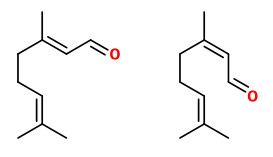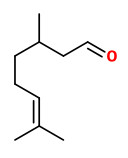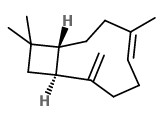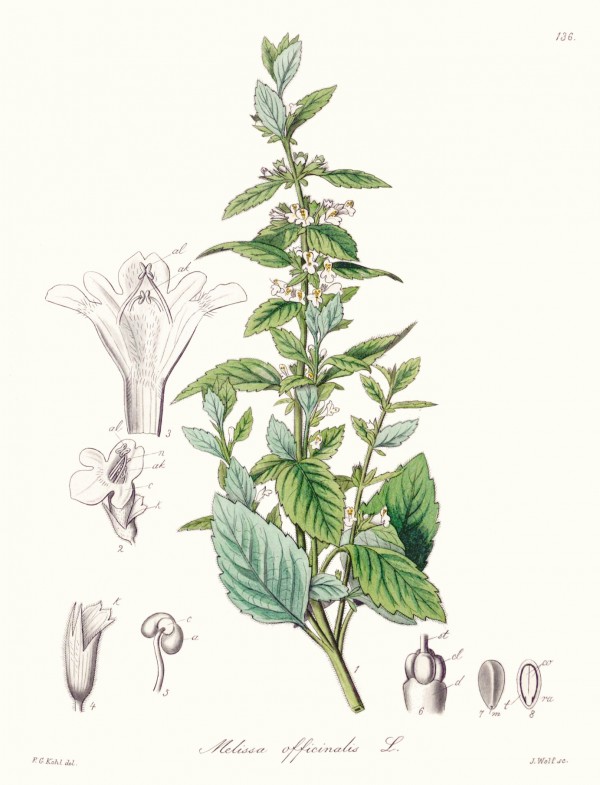Dies ist eine alte Version des Dokuments!
Melissa officinalis L. - Lamiaceae - lemonbalm, honey flower, beebalm, bee balm, Melisse, Zitronenmelisse
Perennial herb, up to 90cm tall, native to the Mediterranean, West Asia, naturalized in Europe; stems erect, pyramidally much branched, pubescent; leaves ovate, base rounded to subcordate, margin serrate-crenate to obtusely serrate; corolla creamy white, 1.2-1.3 cm, villous outside, upper lip emarginate, middle lobe of lower lip obliquely spreading.
„Used for flavoring salads, soups, and liqueurs. Oil employed in perfumery; commonly known as balm tea; a home remedy sometimes used for headaches and toothaches.“
http://www.efloras.org/florataxon.aspx?flora_id=2&taxon_id=200019809
„The leaves have a gentle lemon scent, related to mint… The white flowers attract bees, hence the genus name Melissa (Greek for 'honey bee')… Lemon balm is also used medicinally as an herbal tea, or in extract form. It is used as an anxiolytic, mild sedative, or calming agent.“
http://en.wikipedia.org/wiki/Melissa_officinalis
„The composition of the essential oil depends on the origin and the climate conditions, the time of harvest and the age of the plant… The main components are citral (with 40-70%, as a mixture of geranial and neral), citronellal (1-20%) and β-caryophyllene (5-15%).“
http://de.wikipedia.org/wiki/Zitronenmelisse
 citral (geranial, neral) |  citronellal |  caryophyllene |
„…dried lemon balm leaves originally contained 0.32% essential oil of which citral (neral + geranial) 0.13%, total polyphenol compounds 11.8% comprising total hydroxycinnamic compounds 11.3% (rosmarinic acid 4.1%) and total flavonoid compounds 0.5%. The tea contained 10 mg/l of essential oil (extraction yield 31%) with much more citral (74% of the essential oil). It also contained large amounts of polyphenol compounds (about 1.07 g/l) corresponding to a 93% extraction yield.“
[The aromatic and polyphenolic composition of lemon balm (Melissa officinalis L. subsp. officinalis) tea., Carnat, A.P., Carnat, A., Fraisse, D., Lamaison, J.L., Pharmaceutica Acta Helvetiae, 72(5), 1998, 301-305]
M.officinalis plants from different populations cultivated in Poland yielded 0.08-0.25% (leaves) and 0.06-0.167% (herb) of essential oil. Main components of the oil from the leaves were citral (10.8-64.5%), citronellal (3.6-15.1%), caryophyllene oxide (5.8-18.6%), and β-caryophyllene (0-12.2%).
[Variability in the content and composition of essential oil from lemon balm (Melissa officinalis L.) cultivated in Poland., Patora, J., Majda, T., Gora, J., Klimek, B., Acta poloniae pharmaceutica, 60(5), 2003, 395-400] http://www.ptfarm.pl/pub/File/wydawnictwa/acta_pol_2003/pdf-y%202003-5/395-400.pdf
„Current therapy for some gastrointestinal disorder is directed towards inhibition of smooth muscle contractions. It is well known that herbal medicines are traditionally used for their spasmolytic activity… It seems that the inhibitory effect of the essential oil [on contraction of rat ileum induced by KCl, 5-HT and ACh] is closed to the effect of citral… but other constituents of M.officinalis essential oil also have some contribution… M. officinalis essential oil and its main component, citral, possess a significant inhibition effect on ileum contractions. Therefore, it seems to be a useful herbal medicine for the treatment of gastrointestinal spasms. “
[Relaxant effect of essential oil of Melissa officinalis and citral on rat ileum contractions., Sadraei, H., Ghannadi, A., Malekshahi, K., Fitoterapia, Vol.74(5), 2003, 445-452]
http://www.sciencedirect.com/science/article/pii/S0367326X03001096

Kohl,F.G., Die officinellen Pflanzen der Pharmacopoea Germanica, t.136 (1891-1895)
http://plantgenera.org/species.php?id_species=655733
